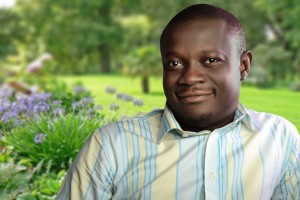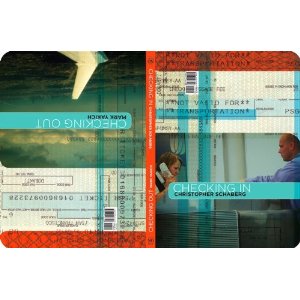My first publications were short stories, the first in the Fall 1969 issue of the The Georgia Review and the second in the January 1971 issue of Esquire. In 1975, 1986, 1992, 1993, I published story collections, a novella in 1995, and a novella with two stories in 2000. During those years I was also writing and publishing poems and essays. But around 2000, in the process of writing The Story of a Million Years, I essentially converted myself into a novel-writer. Instead of writing stories, I wrote “chapters,” most of which could stand alone as stories.
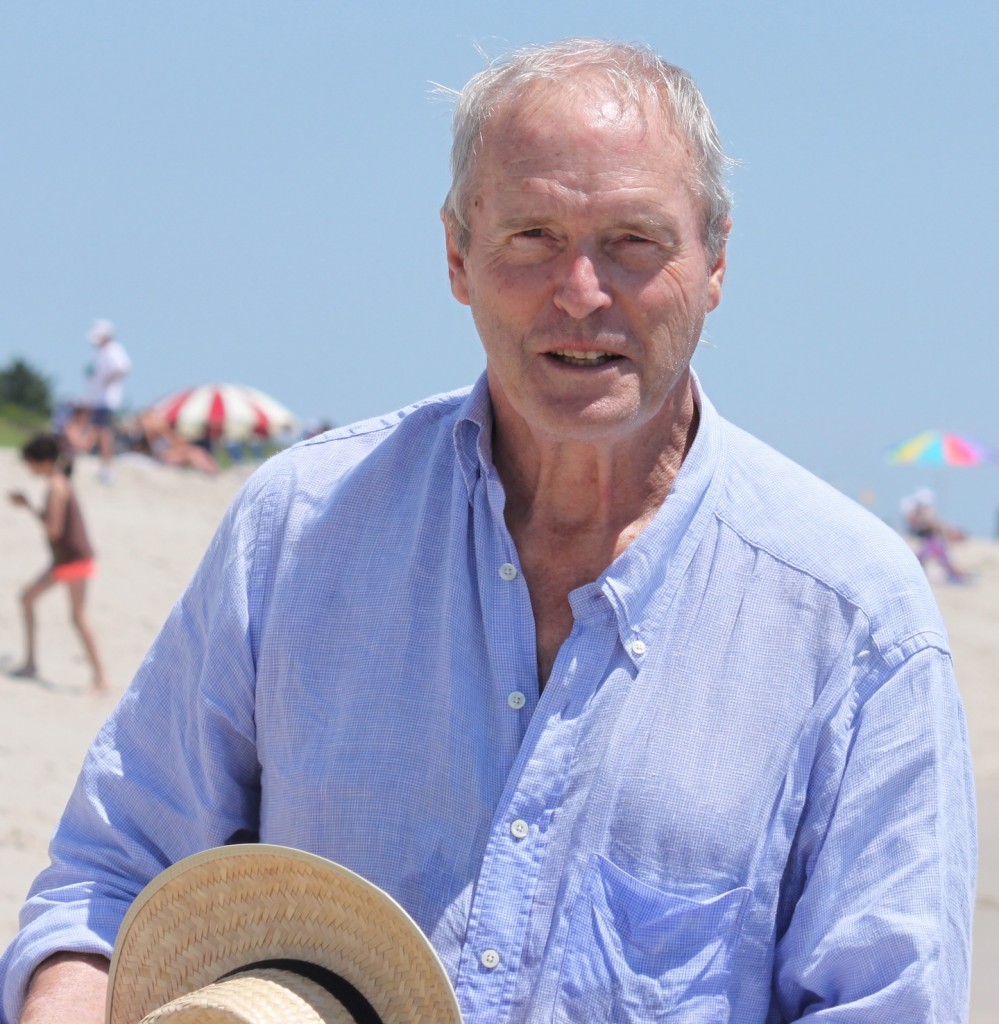 But here in the early months of 2015, I’ve come back to story-writing with new subject matter and a renewed passion for the form. The main reason I’ve returned to the short story is that a couple of new technical elements have entered my writing process. One of them is that I’ve discovered that my narrative prose can be enhanced by imposing a formal “discipline” on my paragraphs. I’m not sure why I first chose to make prose-writing more difficult than it ordinarily is, but I’ll speculate that it came about fairly naturally. From the many sonnets, villanelles, and syllabic poems I’ve written, I’m accustomed to the discipline of formal requirements–I’d just never considered trying such a device in prose. In the process of writing a story about a character named Hazel Hicks, I noticed that the first several paragraphs I had composed were approximately the same length–and I liked the look of that symmetry on the page! I must have thought something along the lines of Wow, that looks so cool, I’ll bet I can do that for the whole story.
But here in the early months of 2015, I’ve come back to story-writing with new subject matter and a renewed passion for the form. The main reason I’ve returned to the short story is that a couple of new technical elements have entered my writing process. One of them is that I’ve discovered that my narrative prose can be enhanced by imposing a formal “discipline” on my paragraphs. I’m not sure why I first chose to make prose-writing more difficult than it ordinarily is, but I’ll speculate that it came about fairly naturally. From the many sonnets, villanelles, and syllabic poems I’ve written, I’m accustomed to the discipline of formal requirements–I’d just never considered trying such a device in prose. In the process of writing a story about a character named Hazel Hicks, I noticed that the first several paragraphs I had composed were approximately the same length–and I liked the look of that symmetry on the page! I must have thought something along the lines of Wow, that looks so cool, I’ll bet I can do that for the whole story.
The other new technical element in my writing process is my realizing a way to give my subconscious more control in my narrative decision-making. In this case, a novel I wrote very quickly in 2012 (The Faulkes Chronicle) showed me how to invent things on the fly. From my success in making necessarily spontaneous decisions, I learned that my literary imagination didn’t need as much supervision as I’d thought it did. My composing process could function in a way that in forty-some years of trying to create literary art I’d never quite acknowledged or trusted.
These new elements have enlivened my writing life, they’ve made story-composition more exciting for me, and I’m grateful for their arrival in the language-generating lobe of my brain. For readers of the somewhat wonky discussion that follows, however, I offer these two caveats: 1) What works for me may not work for you, and 2) I have no evidence that either of these new “methods” will make my work any more publishable than it ever was.
The Finite Paragraph
Here’s the first paragraph of a story titled “None” that I finished just a few weeks ago:
Hazel Hicks was the first “None” to graduate Crossley State College as a Religion Major. Hazel herself thought it nothing special. She thought it an obvious choice for someone like her. Which is to say, a person who took every form of life seriously but who found all creation stories implausible–even the most entertaining and compelling.
In my font (12-point Courier) and my manuscript margins (1.25” inches on both sides of the page), this paragraph is six lines long. All but one of the other seventy-one paragraphs of the story are six lines long. And that one line is longer because it has a special place in the narrative. I count lines instead of words. Last lines of the paragraph get a little slack–they can be six or seven spaces shorter than the other lines. I don’t justify my lines, and MS Word makes all the decisions about line-breaks–which adds an element of kooky arbitrariness to how the words arrange themselves in each of the lines of my paragraphs.
The number of lines to which I limit my paragraphs matters in ways I don’t much notice while I’m writing. In three other recent stories, I’ve used nine, eight, and five lines. The lower the number, the greater the difficulty in composing a viable paragraph. And I’m pretty sure the sound and texture of the language changes with the different numbers–but not in ways that I try to control.
The main result of restricting the number of lines is that every paragraph requires extensive revision. So I’m revising two or three times more than I ever have before. I’ve put more time, effort, and thought into every sentence than I have in the past.
I try not to start the next paragraph until I’ve at least tentatively finished the one I’m working on. So I’m a slower story-composer than I have been, and my extended attention to the lived moments of my characters produces more detailed and intense scenes.
Tedious though this method may be, it offers a new pleasure that seems to me akin to what a brick-layer or a stone mason may feel while working on days- or weeks-long construction projects. When I finish two or three of these highly revised paragraphs, it pleases me to see them on the computer screen. Visually those paragraphs suggest solidity of accomplishment–blocks of language that can be assembled into a sturdy composition. Actually even a single one of them pleases me, because I’ve worked on it and cajoled all the little pieces of it into forming the right arrangement of words and sentences.
For literary construction, “the right arrangement of words” in a single paragraph requires that the sentences be of different lengths, that they be grammatically various, that they are musically appealing, that they generate some energy and enlivenment, and that their meaning advances the narrative and/or offers its reader something notable, interesting, startling, funny, and/or memorable.
The discipline of the six-line paragraph is much less demanding than the one for writing sonnets, villanelles, or haiku. So my paragraphs still have the somewhat relaxed sound and spirit of prose–but my hope is that now they will also have some of the intensity, richness of texture, and depth of poetry.
Narrative Problem Solving Through Syntax and Diction:
Letting my sentences do my narrative thinking–that’s the principle I’m applying to these stories I’m writing right now about Hazel Hicks. Here’s a paragraph from page 6 of “None,” the story I mentioned earlier–at this point Hazel Hicks has become a school bus driver.
Benny was twelve, which made him one of the oldest children at Fork Mountain Elementary. He slouched, he had zits and facial hair, and he had a smell Ms. Hicks was pretty sure was cologne. He wouldn’t look directly at her, he didn’t like her sticking her arm out to stop him, didn’t like her making him tell her both his first and last names.
When I wrote this paragraph, I was thinking almost exclusively of describing this boy as Hazel would have seen him as he stepped up into her bus. I had no design, or ulterior motive, for having Hazel extend her arm to stop him, other than imagining that she would, as part of her job, require Benny to properly identify himself to her.
I did, however, have a general plan for Benny. I knew that I wanted him eventually to commit an outlaw act. I wanted him to challenge Hazel Hicks in a way she’d never faced before. I wasn’t sure what the act would be or how it would affect the community of her school bus. And this is where my new method of narrative thinking came into play. In the past, prior to writing the scene, I would have thought out exactly what Benny would do, along with the when and the how of it. Nowadays I’ve excused myself from that premeditated way of composing–planning it out beforehand and then executing the plan in my writing. Nowadays, I tell myself that if I’m sufficiently absorbed in the scene I’m writing, my sentences, as I am generating them, will make the necessary decisions. Composing one sentence of credible action after the other will render each stage of the scene visible–and to sustain that credibility, the decision of what happens will be determined by the words I choose for each phrase and each sentence.
Here’s a paragraph a few pages farther along in this same story:
Frank Hoback’s face seemed to want to convey something to Hazel, but when Benny Sutphin climbed the steps staring straight at her, she wasn’t ready for what she saw. His right eye was swollen nearly shut, and the flesh around it was visibly bruised. She thought she knew exactly what his outraged face meant to tell her. Look what happened to me!
I like to believe that I decided on the black eye just as Benny was climbing the steps to board the bus. At this stage of the composition, I haven’t yet decided exactly what Benny’s going to do. But I have prepared for him to commit a violent act–as a delayed response to whatever happened that gave him this black eye before he boarded the bus to go to school.
Now here’s a paragraph just slightly beyond the previous one:
The children spoke so quietly among themselves the bus seemed to be sounding a minor chord. When she parked it and opened the door, the kids were eager to be free of it. Benny was the last to walk up aisle. She raised her hand to let him know she wanted to speak to him. When she said his name, he slashed her arm with a pocketknife.
And here’s exactly the place where the sentences have done my thinking for me. Hazel’s raising her arm to stop Benny in their first meeting turns out to have been excellent preparation for Benny’s outlaw act. Very likely my subconscious had a notion that Hazel’s raised arm on page 6 would come into play in the story’s turning point on page 9. But it did not confide that notion to me until three pages later–by way of the sentence “She raised her hand to stop him to try to talk with him.” After I’d written it, I revised that sentence (and changed “stop” to “let him know”) so as to make Hazel’s arm-raising less confrontational–thus the phrase “let him know she wanted to speak to him” makes the last clause of that paragraph–“he slashed her arm with a pocketknife”–all the more shocking.
The sentence in which the act occurred made the decision that Benny would slash Hazel’s arm the instant after she said his name. Maybe I could have planned to have it happen that way–Benny’s slashing Hazel’s arm immediately after she utters his name has a compelling narrative and psychological logic to it. But I didn’t. Its happening just in the moment of my typing the sentence made me shiver with shock–as if I’d just seen it happen.
Making-decisions-in-the-writing requires me to trust my imagination to work out the details of a general plan that I’ve brought to the writing. So it more deeply engages my subconscious; therefore, it makes the typing of the sentences more exciting. And it leaves room for changing the plan if a better move presents itself as I’m composing. It infuses my pages with more spontaneity.
The Endgame
Making it new comes naturally for most artists–it’s a basic of the artistic inclination. But the longer you practice your art the harder it becomes to produce something original. Musicians’ careers offer an audible demonstration of this principle. Bob Dylan, Paul Simon, Joni Mitchell (singer-songwriters of my generation) are never far from my thoughts when I think about aging artists. All three of them were extraordinary for their talent and achievement in their twenties and early thirties. Although it feels disrespectful for me to say so, Mitchell’s powers diminished first, though what she wrote and sang remained interesting. The lingering interest may be because the new songs (“Come In From the Cold,” e.g.) evoke a listener’s memory of the old songs (“I Could Drink a Case of You,” e.g.), thereby enabling a dedicated listener to hear a past masterpiece simultaneously with the new “pretty good song.”
Dylan and Simon had stellar middle periods. Simon’s Graceland was arguably the finest pop album ever recorded–but since then there’s been a decline in his level of achievement. Dylan has gone on recording superb music, though it has to be said that he’s recorded nothing that’s in the same league with “Blowing in the Wind,” “Don’t Think Twice It’s Alright,” “Like a Rolling Stone,” or “Masters of War.”
It’s Dylan’s ongoing viability that I find comforting, though it’s also disturbing in certain ways. I appreciate his belligerent and successful refusal to be locked into the box of “Folky,” but I can’t quite digest his disavowal of the idealism we heard in those early songs. I don’t like his commercials for Cadillacs, and I have a lot of trouble with both the sound and the concept of his album of songs Frank Sinatra made famous. But I’ll tell you one thing I do like, and that’s his “Things Have Changed,” which was written for the 2000 movie Wonder Boys. And I think his 2012 album Tempest is evidence of his ongoing viability as both a songwriter and a performer.
I’ve never been that much of a fan of Miles Davis’s music, though I’ve always recognized that his work and his contribution to jazz was that of a master. But I’ve also always thought that his move into rock and funk around 1968 was a huge mistake. Which doesn’t mean that I don’t understand the necessity to make some changes, and to make big changes rather than small ones. And doesn’t mean that I wouldn’t have done the same thing if I’d been Miles Davis. I’d have probably made a worse move. An interesting comparison would be Ray Charles’s decision to record Country & Western songs, a move that revitalized his career.
Trying to make art is, in my view, the most rewarding possible life, which is why most artists understand it to be a lucky privilege. But the noble challenge is to keep making new art without– well, I don’t know any better way to phrase it than “falling on your ass.”
If Bette Davis is right, that “Old age ain’t no place for sissies,” then it’s for sure that an artist’s finding a way to stay creatively alive in his or her senior years will be a challenge all the way to the end. You can’t stop trying to make your work new, and you can’t stop being afraid you’re going to fall on your ass. And here’s the ultimate difficulty–you can’t anticipate whether your new work will be viable or be the visible sign to the world that you’ve finally taken the fall. Art-making is a gamble; you don’t bet money, you bet your talent, your identity, your self-respect, your life as you have known it.
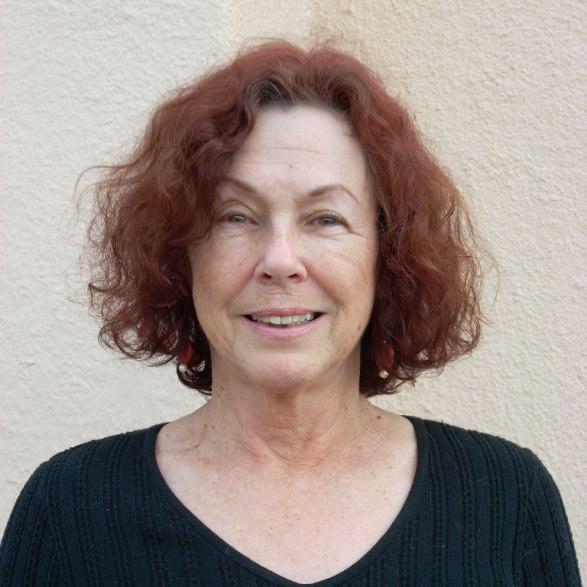
 Today we are pleased to feature author Claire Polders as our Authors Talk series contributor. In her podcast, Claire discusses her short story “Fistfuls” and the various ways she starts a story. Sometimes she starts with a philosophical question, other times the story is based around a true event that she experienced, and sometimes (in the case of “Fistfuls”) she writes from curiosity and allows the story to guide her.
Today we are pleased to feature author Claire Polders as our Authors Talk series contributor. In her podcast, Claire discusses her short story “Fistfuls” and the various ways she starts a story. Sometimes she starts with a philosophical question, other times the story is based around a true event that she experienced, and sometimes (in the case of “Fistfuls”) she writes from curiosity and allows the story to guide her. brain. He compares it to writing with your right hand versus your left. James takes his influence from writers that focus greatly on language and how it contributes to the narrative. In the podcast, James reads a few of his poems and discusses the inspiration behind them.
brain. He compares it to writing with your right hand versus your left. James takes his influence from writers that focus greatly on language and how it contributes to the narrative. In the podcast, James reads a few of his poems and discusses the inspiration behind them. Today we are pleased to feature author Michelle Ross as our Authors Talk series contributor. Michelle reads from and discusses her short story, “Stories People Tell.” She talks about how the story originated with a kind of confession of almost hitting a pedestrian with her car.
Today we are pleased to feature author Michelle Ross as our Authors Talk series contributor. Michelle reads from and discusses her short story, “Stories People Tell.” She talks about how the story originated with a kind of confession of almost hitting a pedestrian with her car.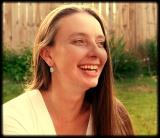 If it’s Wednesday, you won’t find me in my office, not at my desk at home nor the one at work. You won’t find me at the quirky Blue Moose Café, or The Grind just off campus, indulging in reading and writing with a healthy dose of caffeine. You won’t find me in the Robinson Reading Room of the Wise Library at West Virginia University. Instead, you might find me riding the Personal Rapid Transit, or PRT, a monorail that connects the various WVU campuses around Morgantown, traveling from downtown to the Health Science Center. When the doors open at the depot, you might find me climbing stairs and walking across the parking lot towards the Mary Babb Randolph Cancer Institute, making my way to the second floor of the building, to the chemotherapy infusion center. It’s here that I spend Wednesdays, working with patients with cancer, although I’m not a doctor or a nurse. I’m a creative writer. Instead of taking a patient’s vitals, I’m there to take his or her story.
If it’s Wednesday, you won’t find me in my office, not at my desk at home nor the one at work. You won’t find me at the quirky Blue Moose Café, or The Grind just off campus, indulging in reading and writing with a healthy dose of caffeine. You won’t find me in the Robinson Reading Room of the Wise Library at West Virginia University. Instead, you might find me riding the Personal Rapid Transit, or PRT, a monorail that connects the various WVU campuses around Morgantown, traveling from downtown to the Health Science Center. When the doors open at the depot, you might find me climbing stairs and walking across the parking lot towards the Mary Babb Randolph Cancer Institute, making my way to the second floor of the building, to the chemotherapy infusion center. It’s here that I spend Wednesdays, working with patients with cancer, although I’m not a doctor or a nurse. I’m a creative writer. Instead of taking a patient’s vitals, I’m there to take his or her story.

